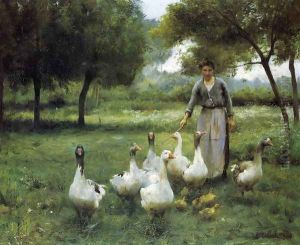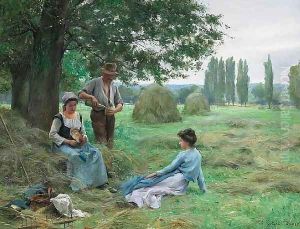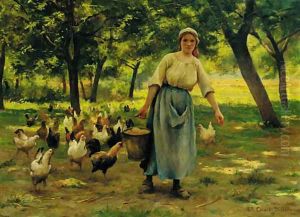Therese Marthe Francois Cotard-Dupre Paintings
Therese Marthe François, also known as Thérèse Marthe Françoise Cotard-Dupré, was a French artist born in 1867. Details about her early life, including her family background and education, are not widely documented, which is not uncommon for many female artists of the period whose lives and careers were often overshadowed by their male counterparts.
Cotard-Dupré is known to have been active as an artist during the late 19th and early 20th centuries. She was a painter who primarily focused on genre scenes, portraits, and still-life compositions. Her works exhibit the influence of her contemporaries in the Impressionist and Post-Impressionist movements, which were dominant in French art at the time. Cotard-Dupré was associated with the style of Realism, a movement that sought to represent subject matter truthfully, without artificiality, and avoiding artistic conventions, implausible, exotic, and supernatural elements.
There are limited records of her exhibitions and the extent of her career, but it is known that she exhibited her work at the Salon de la Société des Artistes Français, a major annual art event in France. The Salon was the official art exhibition of the Académie des Beaux-Arts in Paris and was considered the greatest annual or biannual art event in the Western world at the time. Cotard-Dupré's participation in the Salon indicates that she was a recognized artist of her era and was engaged with the art world's most significant institutions.
The death year of Thérèse Marthe François Cotard-Dupré is not well-documented, which reflects the broader issue of historical documentation and recognition of female artists. Many women in the arts have been neglected in historical records, and as such, their contributions and life details have often been overlooked or lost over time. Despite this, the legacy of artists like Cotard-Dupré contributes to our understanding of the role women played in the development of art history, and her works continue to be of interest to collectors, scholars, and enthusiasts of French art from this period.


